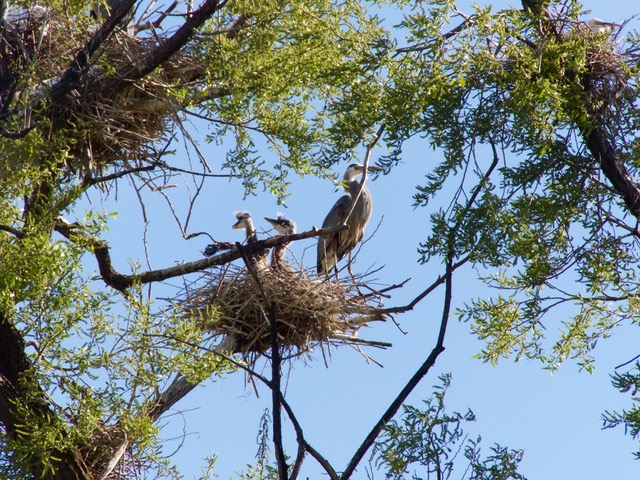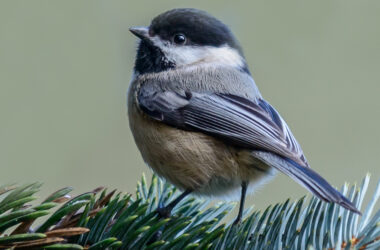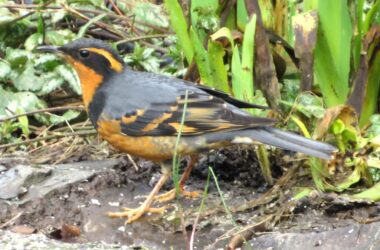Great blue herons likely have been around for several million years. Their ancestors may have evolved 60 million years ago.
They come from a family that likes water, from marshes to rivers. There are over 60 species of herons, egrets and bitterns across the globe. Our big blues can be 4.5 feet tall with a 6-foot wingspan.
They are the largest members of their family in North America. The biggest heron is appropriately named goliath heron. It can be 5 feet tall with a 7-foot wingspan. Goliath herons are struggling to survive in southern Asia and Africa.
Over a century ago our own herons and egrets were in trouble. During nesting season, when their plumage is at its fanciest, the adults were slaughtered so their feathers could be used to decorate women’s hats.
Some women disapproved, organized the early Audubon societies, and got feather hunting outlawed in the U.S.
Our great blue heron breeding range extends to the Yukon, further north than any of their smaller cousins. In the north it sticks to the coast. Snow and ice can make hunting and survival difficult.
When hunting or feeding this heron is often alone. But when it’s nesting season, the great blue herons gather in colonies. The community is safer from predators than a lone nest would be.
There is a visible colony right now along Interstate 5. There I counted at least 27 nests that look repaired and occupied this season. The colony is in tall, bare trees east of the northbound lanes, just south of Exit 263.
Once those trees leaf out most of the nests cannot be seen from the freeway.
Old nests and colonies are often re-used. The male gathers sticks, the female places them. The female lays two to six pale blue eggs, one every two or three days until her clutch is complete.
Both adults take turns incubating. The eggs hatch after about four weeks, usually in the sequence laid. Food supply and competition among the hungry young can determine how many reach adulthood.
Two months after hatching, the young should begin to fly. They’ll leave the nest before the end of a third month.
All this time, the nestlings are fed by the parents. The diet? Mostly fish, but also amphibians, invertebrates, reptiles, small mammals, small birds and eggs. In adults, the food is swallowed whole thanks to very expandable jaws and throat.
I hope most people agree it is far nicer to see these spindly-legged characters atop a messy nest 30 feet up than to see some long plumes on an ancestor’s fancy hat.
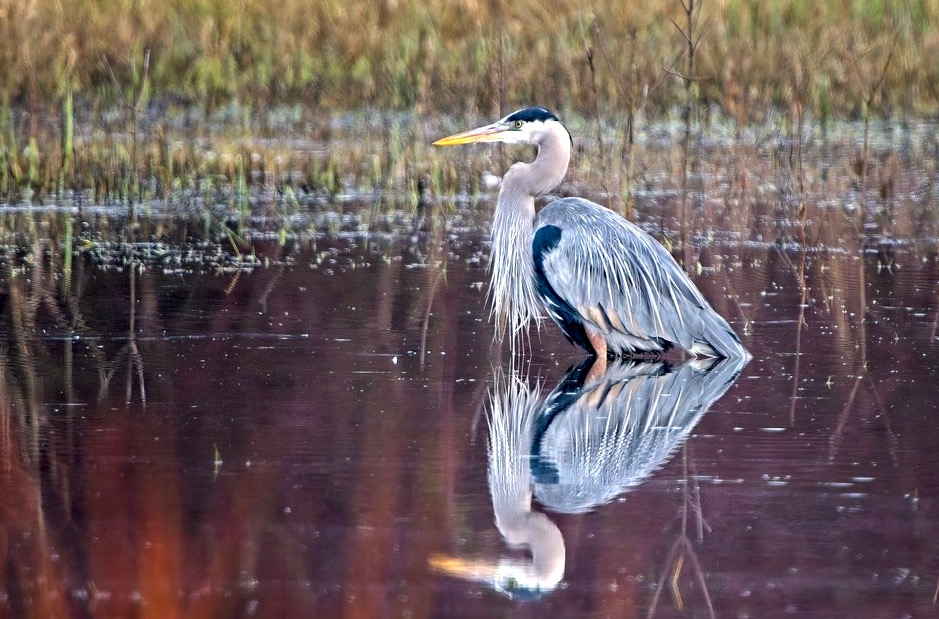
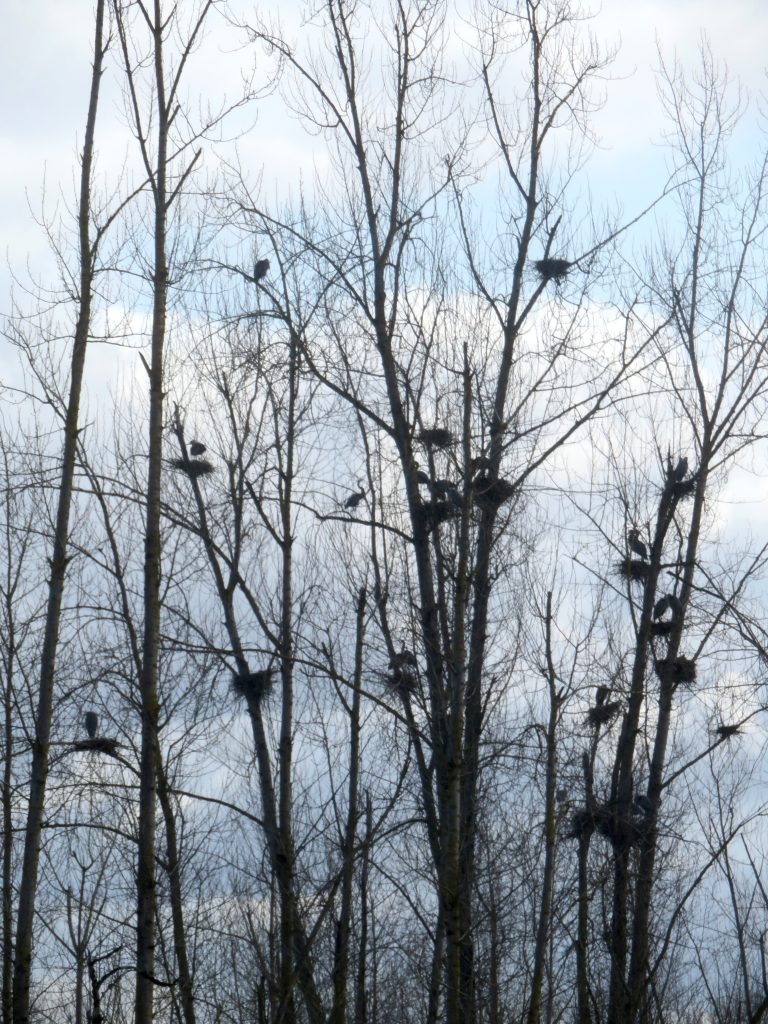
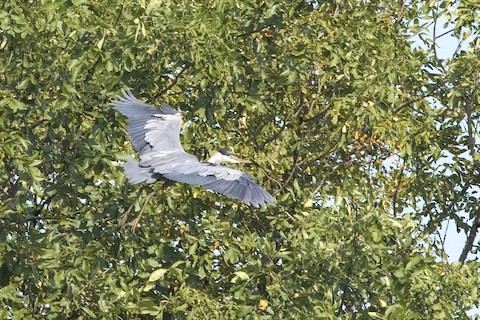
For information about upcoming Salem Audubon programs and activities, see www.salemaudubon.org, or Salem Audubon’s Facebook page.Harry Fuller is an Oregon birder and natural history author of “Freeway Birding.” He is a member of the Salem Audubon Society. Contact him at [email protected] or atowhee.blog. His “Some Fascinating Things About Birds” column appears regularly in Salem Reporter.
GET SALEM NEWS – We report on your community with care and depth, fairness and accuracy. Get local news that matters to you. Subscribe today to get our daily newsletters and more. Click I want to subscribe!
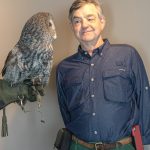
Harry Fuller is an Oregon birder and natural history author of three books: “Freeway Birding,” "Great Gray Owls of California, Oregon and Washington," and "San Francisco's Natural History--Sand Dunes to Streetcars." He leads birding trips for the Malheur Field Station. He is a member of the Salem Audubon Society, and leads bird trips locally. Harry has just published a new book, BIrding Harney County.

